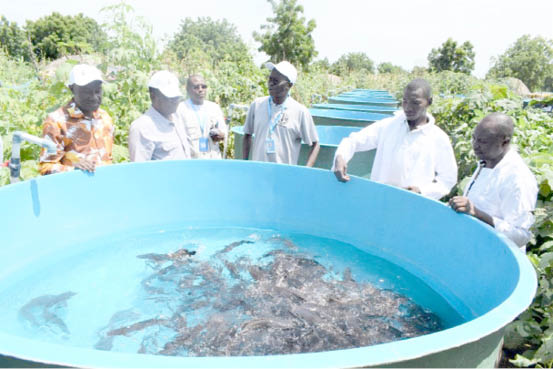Overfeeding is the most common mistake new fish owners make. When you give fish too much food, the remnants can clog your filter and break down into toxins that are harmful to fish. Hence the warnings on fish food packages not to overfeed the fish.
Understand how fish eat
In nature, fish eat whenever they are hungry and food is available. If food sources are plentiful, they will eat several times a day. On the other hand, if food sources are scarce, they might go for days between meals. For this reason, fish are very opportunistic and will eat whenever they have a chance.
That means that if you offer them food, they will usually gobble it up, even if they aren’t starving. Keep that in mind the next time your fish “beg” for food. Fish quickly learn who brings the food to the tank and will jump at the chance to be fed, even if they are not in dire need of food.
On President Buhari’s new date for the use of old N200 notes
2023: How insecurity may affect S/East’s 10.90m votes
Number of feedings per day
How often you need to feed your fish depends on the kind of fish you have. In general, most fish do quite well on one feeding per day. However, some owners prefer to feed their fish twice a day. Young, growing fish might need to eat three or more times per day. Regardless of the number of feedings, the key is to keep each feeding very small.
Most fish will do well with two meals a day. The timing is not critical, with the exception of nocturnal feeders. If you have nocturnal fish in your tank, such as certain catfish, be sure to feed them just before turning the lights out at night. They will hunt for the food in the dark, using their keen sense of smell to find it.
There are some exceptions to the once-per-day feeding rule. Herbivores (vegetarian fish) like silver dollars, mollies, and farlowellas need to eat frequently because they have smaller stomachs that cannot hold a lot of food. In nature, they would graze all day on plants. They should be given several small feedings a day or be provided with live plants they can nibble on. Goldfish do not have a stomach at all, so shouldn’t be fed a large meal all at one time. They naturally nibble on algae and other food items throughout the day, so it is better to feed them several small meals during the day rather than giving them a big meal only once a day.
Newly hatched fry and young fish who are not fully grown require more frequent feedings of special foods designed for fry.
Determining the right amount of food
A good rule of thumb is to give your fish no more food than they will consume in less than five minutes. When in doubt, underfeed. You can always give them another small feeding if necessary.
Also, keep in mind that the type of food is just as important as the amount. You want to ensure your fish are getting the proper nutrition they need to stay healthy. Also, if you have a community of fish, you’ll need to consider every species’ dietary needs and find food to balance that out.
What happens if you overfeed fish?
If you overfeed your fish, the effects may not be apparent at first. It’s a myth that fish will explode from eating too much, so you don’t have to worry about that. However, there are other health concerns associated with overfeeding.
It is possible for some fish species to develop a fatty liver disease (hepatic lipidosis). Overfeeding can also stress the fish and the negative effects on the aquatic environment itself will affect the health of your fish.
Uneaten food will produce by-products (ammonia, nitrite, and nitrate) that can be harmful to fish. In the event that you do overfeed, promptly remove the uneaten food using a siphon or net. If you do not remove the excess food, you risk affecting the chemistry of the aquarium water. Nitrite and ammonia levels can rise and the oxygen and pH can drop to life-threatening levels. The by-products can also cloud the water, promote an algae bloom, or encourage mold or planaria to grow out of control.
SOURCE: The Spruce Pets

 Join Daily Trust WhatsApp Community For Quick Access To News and Happenings Around You.
Join Daily Trust WhatsApp Community For Quick Access To News and Happenings Around You.


